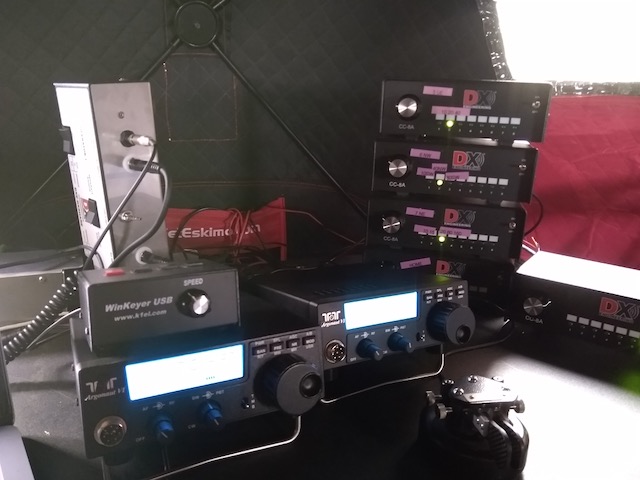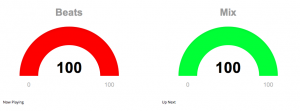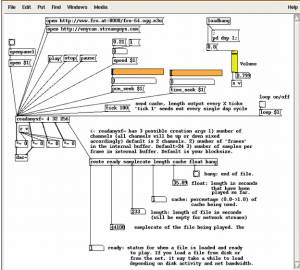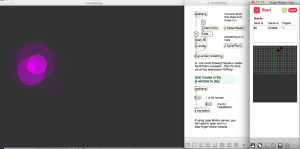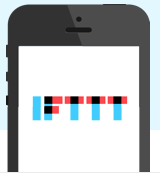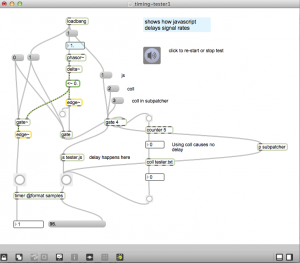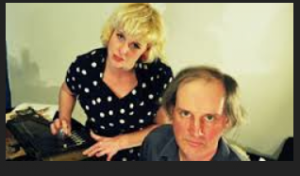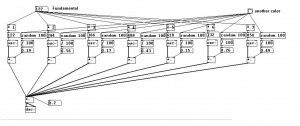“When 30 Seconds of A Song is More than Enough” By Paul Lamere
2014 submarine fiber optic cable map
How to write an external for Puredata
For non-signal objects.
Very helpful reference.
By Johannes M. Zmolnig
http://pdstatic.iem.at/externals-HOWTO/HOWTO-externals-en.html
converting IQ audio files using sox
To get information about a file:
# sox --i 10meter96.wav
Input File : '10meter96.wav' Channels : 2 Sample Rate : 96000 Precision : 16-bit Duration : 00:00:16.50 = 1584387 samples ~ 1237.8 CDDA sectors File Size : 6.34M Bit Rate : 3.07M Sample Encoding: 16-bit Signed Integer PCM
#
To convert the sample rate:
# sox 10meter96.wav -r 44100 10meter44.wav
More useful hints about sox by Selvaganeshan at “The Geek Stuff”
http://www.thegeekstuff.com/2009/05/sound-exchange-sox-15-examples-to-manipulate-audio-files/
Here are the commands that worked to get the raw IQ data from rtl_sdr into Max
rtl_sdr -f 94900000 -s 1024000 -g 50 iq.raw
To convert the above to 96k 16bit wav format
sox -e unsigned-integer -r 1024k -t raw -b 8 -c 2 iq.raw -r 96k -b 16 iq.wav
Note: I could not get the above conversion to work with device sampling rates below 1024k. Didn’t try anything higher.
Non-blocking audio file read in Puredata
notes
http://puredata.info/downloads/readanysf
Also found these, but development appears to have stopped
threadlib: http://grh.mur.at/software/threadlib.html
sndfile http://grh.mur.at/software/sndfiler.html
Note: Haven’t tested either of these. The discussion on the forums indicates that there are potential unresolved problems.
Leap Motion musical UI for closed eyes
How many musicians do you know that play with their eyes closed? Not many computer music apps allow this. Bloom is an exception. http://www.generativemusic.com/bloom.html
As an exercise, I tried to make something like Bloom, using Leap Motion. With your eyes closed you can accurately position your hand at the level of eyes, shoulders, hips, etc., And you can quickly move to a point directly outward from your nose, or shoulders. This is the basis of sobriety tests.
The interface, works with a hand motion like sprinkling seeds. Every time you open your hand, it triggers a note based on the height of your hand. It also triggers one of the “Bloom” circles at the XY position.
The prototype was done in Max/MSP Jitter. It was derived from a “bloom clone” project by John Mayrose at: http://www.johnmayrose.com/maxmsp.html
Here’s an example:
download
https://github.com/tkzic/max-projects
folder: bloom
patches
- (main patch) circlething.maxpst
- (poly~ sub-patch) FMPoly2~.maxpat
- (Leap Motion main-patch) leap-finger-switch.maxpat
- (Leap Motion sub-patch) leap-switch-test2.maxpat
externals and dependencies
Note: If you don’t have a Leap Motion sensor, you can use a mouse.
If you are using Leap Motion, download the aka.leapmotion external – and add it to your Max file path in options | file preferences: http://akamatsu.org/aka/max/objects/
instructions
(if not using Leap Motion sensor, skip to step 4)
- Plug in the Leap Motion sensor.
- Open leap-finger-switch.maxpat and click the “start” toggle.
- Wave your hand around – it should be detected and displayed
- Open circlething.maxpat
- If using mouse, just click in the black “circlething” window to play.
- If using Leap Motion, click the message box to activate Leap Motion
- Then open and close your hand, over the sensor to play
- High notes are higher in the window.
How to use IFTTT from Max
IFTTT Twitter triggers are back!
Update – 5/20/2014 –
IFTTT has restored Twitter triggers. By using a Max Twitter client: https://reactivemusic.net/?p=7013 you can now connect Max with IFTTT
original post follows
A possibility with curl
http://blog.tomdoggett.net/2013/05/ifttt-recipe-http-commands.html
A few notes…
It doesn’t appear that IFTTT has a public API.
One method would be to use intermediaries for example – sending email using php (see this post https://reactivemusic.net/?p=4840) Then IFTTT could pick up the trigger – for example, from gmail. Commands could be embedded in the subject or body of message.
Or you could simply use Twitter as the intermediary – using existing internet sensors methods: (see this post: https://reactivemusic.net/?p=5859)
Would this work in reverse?
Other methods:
temboo: The temboo API should be accessible via Max using a ruby server. Temboo has many common points of interaction with IFTTT
mashape: I think the same applies as with temboo.
Marcus Povey describes a workaround using web hooks: http://www.marcus-povey.co.uk/2012/11/07/using-webhooks-with-ifttt-com/
Another idea: http://forums.getpebble.com/discussion/5816/restful-api-iftt-integration-android
Or what about Zapier
Here’s an article about IFTTT Twitter triggers: http://iag.me/socialmedia/how-to-replace-ifttt-twitter-triggers/
Max [js] object delays
The Theory and Technique of Electronic Music
By Miller Puckette
http://msp.ucsd.edu/techniques/latest/book-html/book.html
(Miller with Julianna Snapper)
Programming Electronic Music in Pd
By Johannes Kreidler.
An amazing resource for Pd programming, with downloadable examples.
http://www.pd-tutorial.com/english/index.html
Abstract
Pd was initiated by American software engineer Miller Puckette, who previous co-developed the well known and similarly structured software Max/Msp. Pd is not commercial software; i.e., it was not developed by a corporation and is not for sale. Instead, it is “open source”: its source code is not the (patented) property of a corporation, but is rather freely available to all. One drawback to this is that a detailed operating manual for users who lack programming experience has not existed until now. In contrast to a corporation— which has a monetary interest in ensuring that first-time users can easily operate new software—the open source movement lacks such a driving force to make itself accessible. This book is an attempt to fill that gap.
This tutorial is designed for self-study, principally for composers. It begins with explanations of basic programming and acoustic principles then gradually builds up to the most advanced electronic music processing techniques. The book’s teaching approach is focused primarily on hearing, which we consider a faster and more enjoyable way to absorb new concepts than through abstract formulas.
The patches described are available for download.
